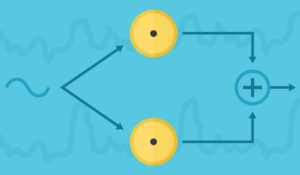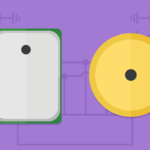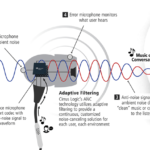 Beamforming arrays let designers create directional microphones using MEMS devices. With the right signal processing algorithms, these can enhance the user experience delivered by many types of audio equipment.
Beamforming arrays let designers create directional microphones using MEMS devices. With the right signal processing algorithms, these can enhance the user experience delivered by many types of audio equipment.
An array can be simple, comprising as few as two microphones, and can be arranged in various configurations depending on the expected location of the preferred sound source relative to the array. Basic configurations include the broadside array, where the axis of the array is perpendicular to the direction of the sound to be captured. This configuration, ideal for TV or PC monitors, is equally sensitive to sounds coming from behind or around the array. If the microphone needs to be less sensitive to sounds from behind or to the side, the endfire array may be more effective. An endfire microphone must be pointed directly towards the most-wanted sound source, such as in handheld microphones used for singing.
Because MEMS microphones are manufactured using semiconductor fabrication processes, sensitivity and frequency response need to be closely matched. This is important in beamforming applications, helping to ensure the array has predictable directional response. The CUI Devices’ blog, “An Introduction to MEMS Microphone Arrays”, explains more on MEMS microphones, beamforming and applications for MEMS microphone arrays.




